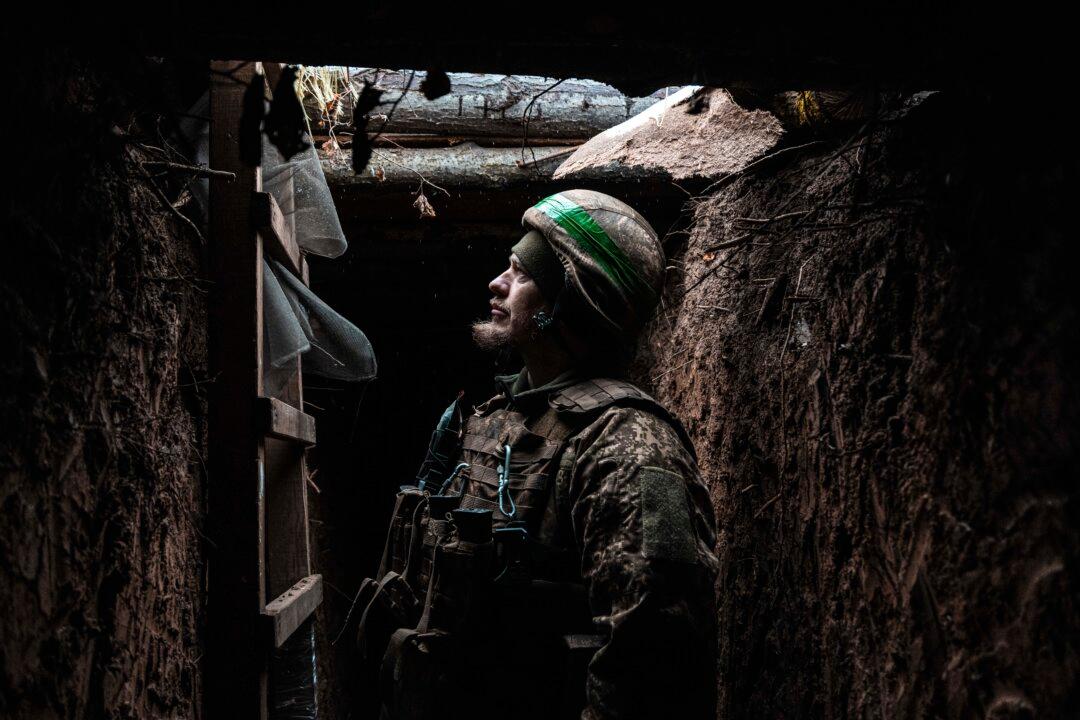The STOXX 600, a pan-European stock index, surged to new highs on Tuesday as investors expected a potential Russia–Ukraine peace deal and increased defense spending by NATO nations to boost the arms industry.
The STOXX 600 index hit an all-time high of 556.80. The market surge was supported by a jump in the SXPARO index, which tracks European defense and aerospace stocks. SXPARO was up 1.68 percent at around 6 a.m. ET on Tuesday after rising 4.6 percent on Monday.
Major European defense companies were trading higher on Tuesday as of 6:20 a.m. ET, including Germany’s ThyssenKrupp AG and Rheinmetall AG, France’s Thales SA, the UK’s BAE Systems PLC, and Sweden’s Saab AB.
Some investors expect earnings in the industry to continue rising strongly if a long era of modest defense budgets has ended and a rush to buy arms has begun. The view is supported by recent developments in the Russia–Ukraine war and U.S. President Donald Trump’s push for NATO to increase defense spending.
“If European defence spending gets anywhere near Trump’s 5 percent of GDP target, European defence companies like Rheinmetall, SAAB, BAE Systems, Thyssenkrupp, and Thales can extend considerably their overnight gains,” IG Markets analyst Tony Sycamore said.
Alberto Conca, chief investment officer at Swiss asset manager LFG+ZEST, said that Europe needs to increase its defense spending, and “we'll be keeping a close eye on how this affects national budgets.”
“Defence stocks are a theme that’s likely to continue to gain momentum,” Conca said. “They’ve already performed well, but I believe they still have room to run.”
There are suggestions that European countries could send troops to Ukraine to maintain peace in the region once a deal with Russia is reached, a positive development for European defense companies.
NATO Defense Budgets
Raising defense spending among European NATO nations presents many challenges. In 2014, the alliance set a target for all members to spend at least 2 percent of their GDP on defense by 2024.Only 23 of the 31 NATO countries met the target last year. Raising it to 5 percent could trigger political challenges for several European nations.
Tim Ripley, a defense analyst, told The Epoch Times that such a hike in defense spending can only be met by taking actions such as raising taxes or borrowing money.
“If you borrow the money, that will quadruple everybody’s interest rates,” he said. “So everyone will pay for it that way, or you put taxes up to pay for it as well. So it’s a massively unpopular thing to do that across Europe.”
Albert Swidzinski, director of analysis at the think tank Strategy&Future, said the 5 percent target is “seriously unrealistic ... if you look at the economic situation and the political instability in European states.”
Last month, German Chancellor Olaf Scholz said that 5 percent of their GDP would represent 200 billion euros ($209 billion) annually. This is a large sum considering Germany’s federal budget is less than 500 billion euros ($523 billion).
“We shouldn’t be irritated. We shouldn’t be appalled,” Polish Prime Minister Donald Tusk told members of the European Parliament last month.
Poland spends the most among NATO members as a proportion of its GDP at a NATO-estimated 4.1 percent in 2024, while eight of the military and political alliance’s 32 members spend less than 2 percent.







